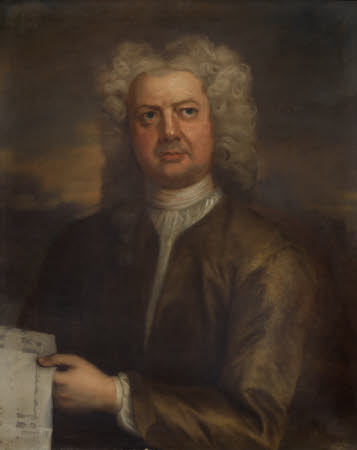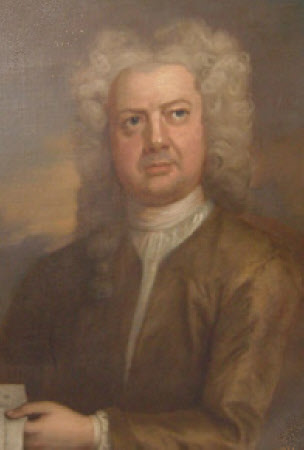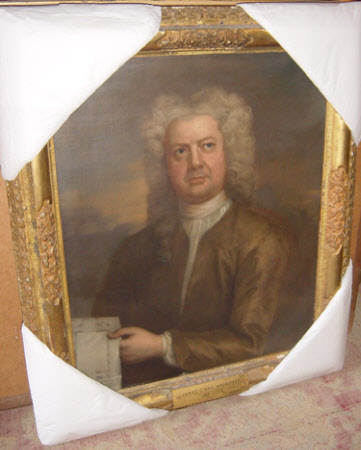James Gibbs (1682-1754) holding a Plan of St Mary le Strand, London
William Aikman (Cairnie 1682 - London 1731)
Category
Art / Oil paintings
Date
circa 1713
Materials
Oil on canvas
Measurements
920 x 800 mm
Order this imageCollection
Wimpole, Cambridgeshire
NT 207913
Caption
James Gibbs was the British architect with the most sophisticated Continental training of any in the 18th century, who was responsible for some its iconic buildings: the Senate House in Cambridge (1722–30), the Radcliffe Camera in Oxford (1737–48), and the churches of St Mary-le-Strand (1714–17) and St Martin’s-in-the-Fields (1722–26) in London. His ‘A Book of Architecture’ (1728) was ‘probably the most widely used architectural book of the century’, with particular influence in North America. He was originally intended for the priesthood in Rome, but instead became a pupil of the architect, Carlo Fontana. He became “the Tory architect par excellence”, and his chief supporters and patrons in this respect were the Jacobite exile, John, 11th Earl of Mar, and Edward Harley, 2nd Earl of Oxford, for whom he built the Library and Chapel at Wimpole (1719–21).
Summary
Oil painting on canvas, James Gibbs (1682-1754) holding a plan of St Mary le Strand, London by William Aikman (Forfar 1682 – London 1731), circa 1713. A half-length portrait, turned slightly to the left, gazing to the right, holding a plan of St Mary le Strand, wearing a brown jacket, white cravat, long grey wig. inscribed plaque - Hogarth P. This portrait was given to Lord Erskine during Gibbs' lifetime.
Provenance
Bequest of Derek Sherborn, 2004.
Makers and roles
William Aikman (Cairnie 1682 - London 1731)


